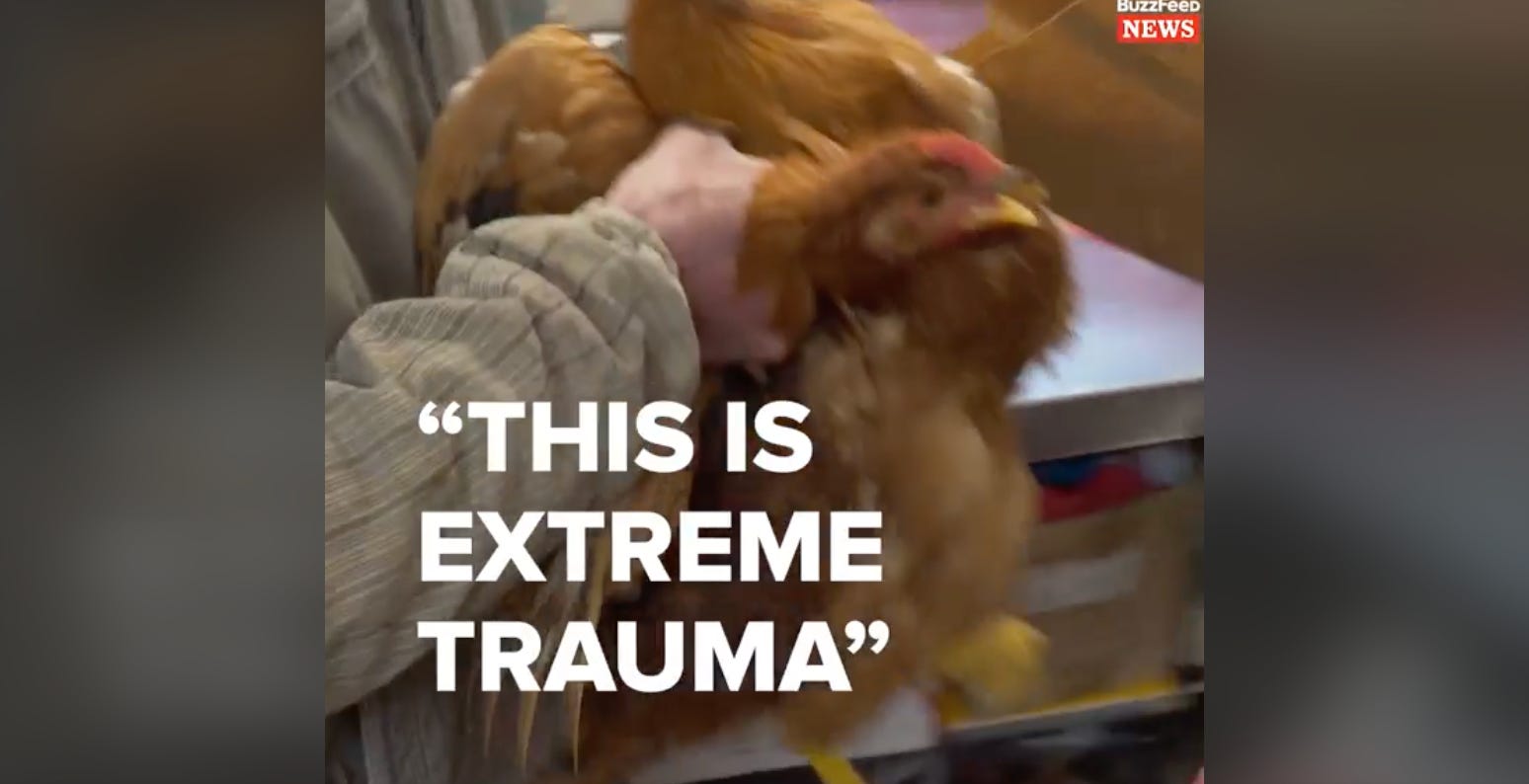|
The Rise of Mass Open Rescue
Ten years ago, we dreamed of a world where hundreds walked into slaughterhouses and took the animals out. Then that dream came to life.
What’s up this week
How did mass open rescue become a movement? I ask that question in today’s newsletter — and the Animal Liberation Conference, which starts on June 9 in Berkeley, has been a huge part of the answer.
We’re releasing a new video today regarding two ideas philosopher Singer spread to the world: anti-speciesism and the duty to give aid. Follow our social media to hear more about how these ideas changed the world – and make sure to see Singer as he travels the country to discuss his new book, Animal Liberation Now. I’ll be on stage with him on May 30 in San Francisco.
A major publication in the pork industry sounded the alarm this week about our open rescue victories in court! The article states that jurors sided with us “ultimately because they thought the defendants, ‘just looked to do what was right.’” Indeed!
We released a podcast about the moral panic over animal rights. I speak to Jeremey Beckham, who was on the defense table when my friend Curtis Vollmar was convicted of disorderly conduct for peacefully leafleting on a public sidewalk, on why animal rights has provoked such a hysterical reaction — and what we can do about that. Listen here!
I’m going live on Friday at 10:30 am to discuss the strategy behind Mass Open Rescue. Why is it so important that we develop a mass movement for rescue — and how do we plan on making it even bigger? Join the livestream here.
How Mass Open Rescue Became a Movement
In 2015, I and four other activists at Direct Action Everywhere did something that everyone told us was impossibly risky: we entered a massive Whole Foods factory farm, without the owners’ consent, and walked out with a broken baby bird named Mei. The resulting story, which Michael Pollan described as a “black eye” for organic agriculture, changed the landscape of not just animal rights but American food politics. For the first time, the world saw what the industry meant by “cage-free” and “Certified Humane.”
But there was a key aspect of the story of that rescue that was and is one of the most important opportunities and challenges for animal rights: the idea of a mass movement for open rescue.
While most of the attention, in both the press and social media, focused on a highly disciplined and committed crack team of activists who were able to infiltrate a Whole Foods farm – with some of it actively criticizing us as extremists – when I traveled the country, on a speaking tour in the spring of 2015, I was telling a very different story.
“Open rescue is not about me,” I said “It’s about you.”
The vision we had for open rescue, I explained, was not about an elite set of investigators exposing the abuses to the public. We knew that exposure, alone, is insufficient to create change. Our vision, instead, was to mobilize thousands of ordinary people to participate in direct action. Our vision was to normalize the act of rescue.
“What is our greatest dream, when we see the brutal abuse of animals?” I asked, as I traveled the country in the summer of 2015. “It’s to give these poor creatures aid. It’s to rescue them, no matter what it takes.”
I closed my talk on that tour by making that dream concrete. Imagine, I asked my audience members, not 5 but 500 people walking to a factory farm, where countless living creatures were being subject to abuse. Imagine the animals trembling in their pens and crates, thinking that their final moments were approaching. But imagine that, instead of cruelty and violence, the animals received love and care. A loving touch to their chin. A bottle of water to quench their thirst. And, above all, escape from the dark, torment-filled halls of the slaughterhouse for a brighter life at sanctuary.
“We can bring that vision to life,” I promised my audience. “But it starts with you.”
And the movement delivered on that promise. The power of our greatest dream – animals rescued, rather than tormented – mobilized hundreds of people across the globe. Songs were literally written about our actions. And the rising movement of rescue put unprecedented social, political, and now legal pressure on systems of abuse that hide in the dark.
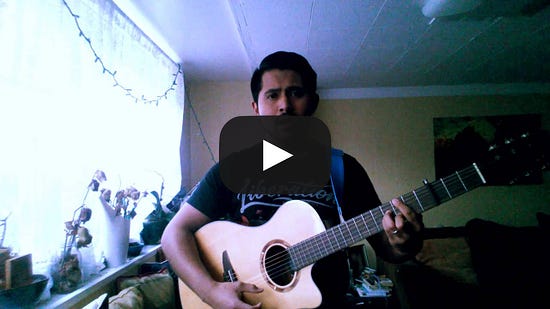
And time and time again, the place where this unfolded most powerfully was at the Animal Liberation Conference.
In 2017, around 200 activists, for the first time (that I am aware of) in animal rights history, gathered at a slaughterhouse in San Francisco and began peacefully removing sick and injured birds from their cages.
In 2018, nearly 500 activists, including young children, peacefully occupied one of the largest egg farms in the state, a supplier to Whole Foods and Costco called Sunrise Farms, and removed dozens of sick and injured birds from their cages.
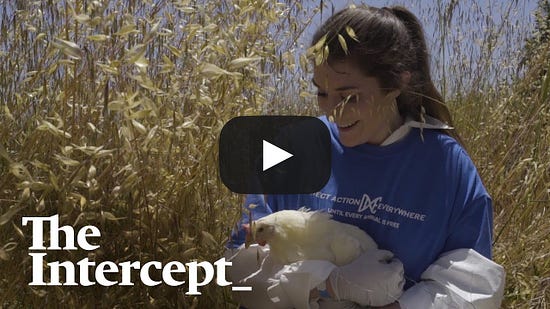
In 2019, a similar number of activists visited one of the largest duck meat farms in the nation, Reichardt, and literally locked themselves onto the slaughter line to stop the violence against animals.
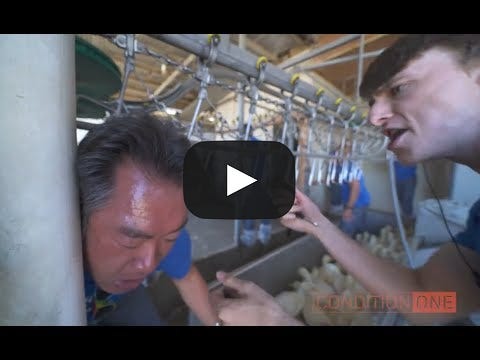
And in 2021, after a hiatus due to COVID, a massive throng of activists gathered outside of the largest poultry slaughterhouse in the Western United States, owned by Foster Farms, and two lucky birds named Ethan and Jax were rescued – and ultimately featured in a story by the New York Times.
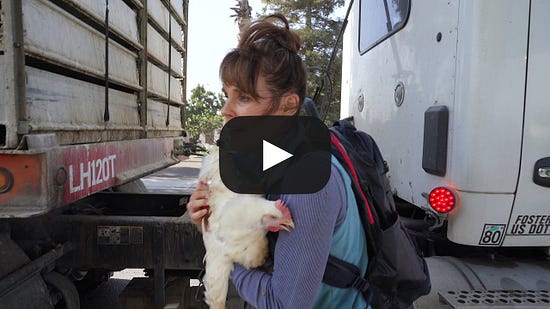
I will have much more to write about the theory behind mass open rescue in the months to come. But what I will say now is that the Animal Liberation Conference is coming, just a few weeks away. And while I have no idea what will unfold – I am no longer involved in operational decisions at DxE – what I do know is this: if you step up, we will have an opportunity to make history.
I hope to see you there.

